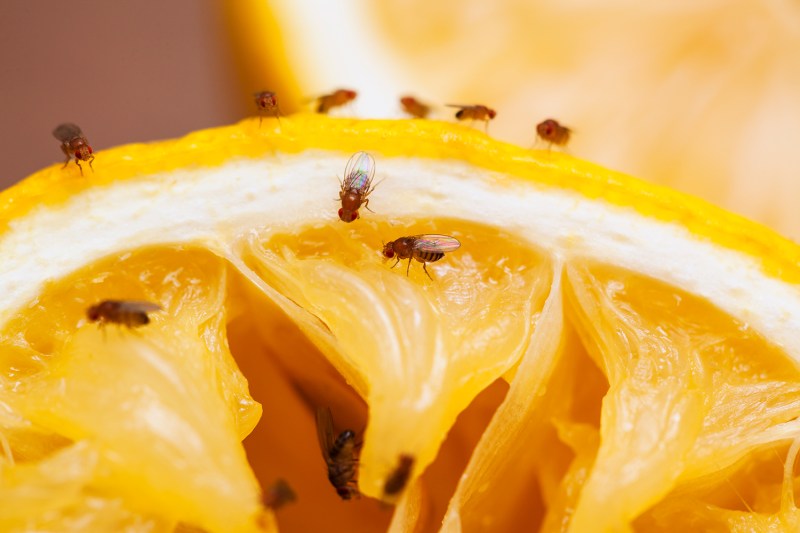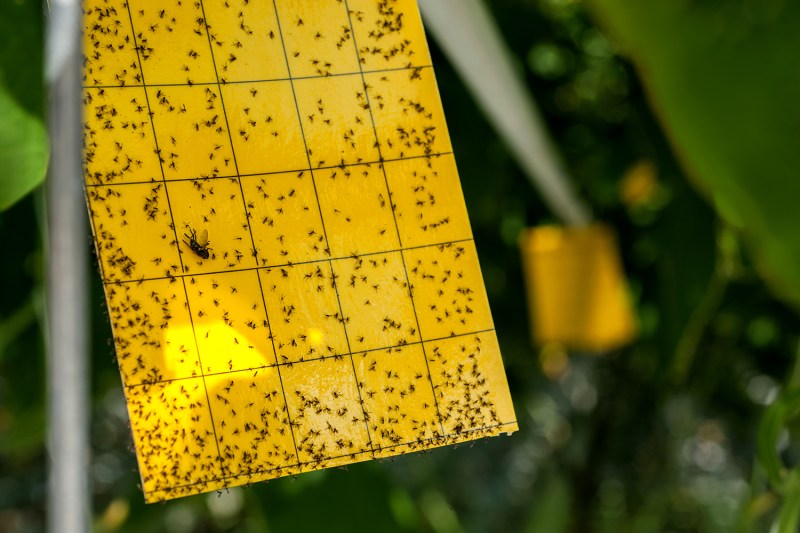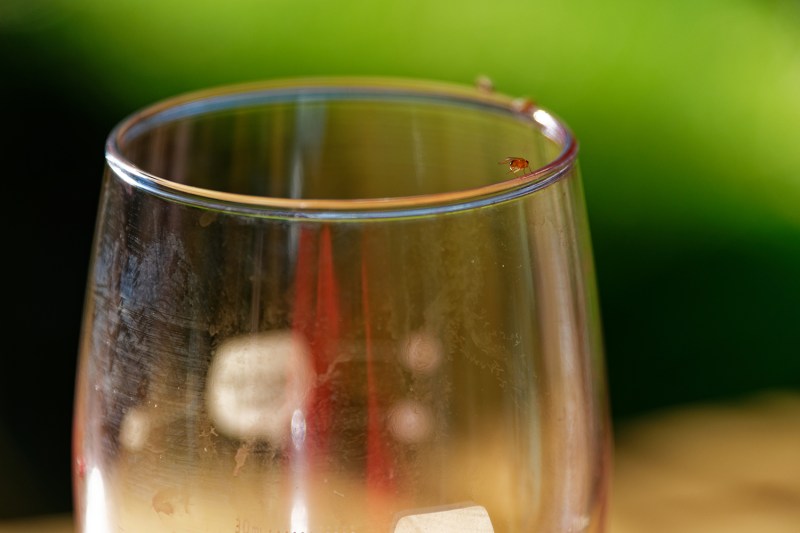Any kind of bug entering your home and causing an infestation can become a serious problem. While it’s always handy to have bug-killing gadgets in your home, fruit flies are tricky to fight off. Fruit flies come from nowhere and can ruin a nice meal faster than just about anything. Getting rid of them isn’t nearly as mysterious as where they come from, however. With an understanding of their lifecycle and what attracts them, you can get fruit flies under control.
How to get rid of fruit flies once and for all

You need to handle fruit flies before they get out of hand. There are several excellent methods for ensuring fruit flies don’t return or live long enough to complete their life cycle. The fastest way to get rid of fruit flies is to take a two-pronged approach. You must capture the adult flies to prevent them from further contaminating your home. Then, you need to get rid of any eggs that may exist. By taking care of both prongs of the fruit fly life cycle — not just trapping adults — you will ensure that you’re getting rid of the flies and keeping them away for good.
First, look for the source of the swarm and remove it. It could be food on the counter or a dirty drain. Clear and clean where the swarm seems to be coming from, and set your trap as close to that area as possible. This will ensure you remove them as efficiently as possible. Here are some of the best ways to get rid of fruit flies in your home and keep them out.
How to get rid of fruit flies with a pre-made trap

One of the easiest things to do is purchase a pre-made trap from a big box store. This can live on your counter and trap fruit flies for a period of time before needing to be changed. You’ll be able to keep infestations down even if you forget to eat all your fruit sometimes.
How to get rid of fruit flies with vinegar
If pre-made traps aren’t your thing, we can tell you how to get rid of fruit flies naturally. A sweet-smelling, fermented vinegar is great at attracting fruit flies. To make your vinegar trap, you’ll need:
- Apple cider vinegar
- Dish soap
- A glass jar
- Lid with small holes
Put about 1/4 cup of apple cider vinegar into the bottom of the jar. Squeeze a little dish soap into the vinegar so that it’s harder for the flies to escape. Screw the lid onto the jar and place it close to the source of the fly swarm. The flies will be attracted to the vinegar smell, but they won’t be able to find their way out.
How to get rid of fruit flies in plants
Plants are a big attractor of fruit flies because of the moist soil. Being careful not to overwater can be a good start, but sometimes you need something more. To help get rid of fruit flies in plants, you’ll need:
- A small shallow dish
- Apple cider vinegar or old wine
- Dish soap
Place a bit of apple cider vinegar or wine to cover the bottom of the dish. Put a few drops of dish soap into the vinegar and place the dish directly onto the soil of the plant. If there’s no room, place the dish next to the plant.
You can also dilute some vinegar and water into a spray bottle and mist the soil once a week to deter flies from laying their eggs.
How to get rid of fruit flies the lazy way

If you have a bit of leftover wine or beer, you can just leave the bottle out on your counter. Put a few drops of dish soap into the leftover liquid to prevent flies from escaping. The natural slope of the bottle will also help prevent escape. This can be a quick and dirty way to begin the process until you make an official trap or buy something.
Troubleshooting your traps
If your traps don’t seem to be working, there are a few reasons why that could be happening.
- You have something more attractive nearby — If you’ve still got that sweet, tempting fermenting fruit on your counter, your vinegar trap isn’t going to fool anybody.
- The holes in the lid are too big — If flies can hang out on the rim of the hole or fly down into the jar for a bit, they may still be able to escape. Reduce the holes.
- They can’t smell your trap — Sealing the jar too tightly prevents the flies from noticing your trap. Allow the trap to breathe by leaving it open or trying a different top. A bit of plastic wrap with holes or a cone of paper could help.
What causes fruit flies in the house?
Explore why fruit flies may be coming in in the first place. They may seem to come out of nowhere, but there’s a science to it. They’re attracted to fermenting, moist conditions such as that fruit you’ve neglected on the counter or a drain that hasn’t had much attention. A single fly can lay around 500 eggs on a piece of fruit hidden from your view. From there, the short lifecycle from egg to reproductive adult can put you in a situation that quickly gets out of hand.
Go through your home and find areas where moisture gathers or food sits out — think about your mop that doesn’t dry well or even the trash. Clear these areas (and eat your fruit!), and you’ll be ahead of the game.
How long does it take to get rid of fruit flies?
Fruit flies have a life cycle of around two to four weeks, depending on the environmental conditions. When the adult dies, you aren’t in the clear. When you get rid of their food and egg-nurturing source, that handles a great deal of it.
More proactive methods may take a week to a month to clear your home completely. The key is patience and maintenance.


